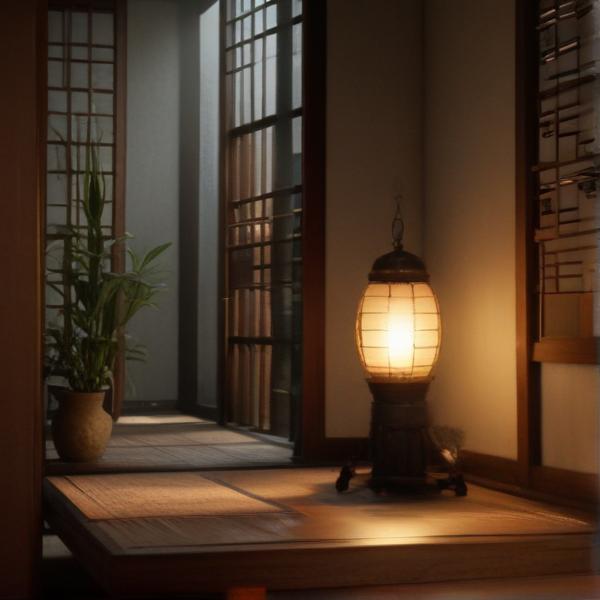基本信息 (Basic Information)
含义与用法 (Meanings & Usage)
中文核心释义 (Core Chinese Meaning): 更换,改变;更加,越发;夜间的时间分段(如“更夫”、“三更”)
英文核心释义 (Core English Meaning): to change, to replace; even more, further; periods of the night (as in 'watch' or 'gēng' during the night)
象形意义 / 为何这么写 (Pictographic Meaning / Writing Rationale)
文言文释义 (Classical Chinese Meaning)
深入学习 (In-depth Study)
字源故事 (Origin Story)
字形演变 (Character Evolution)
常用词语和例句 (Common Words & Examples)
更换 (to replace, to change)
我需要更换一下我的电话号码。
Eng: I need to change my phone number.
更加 (even more, still further)
这次经历让他更加成熟了。
Eng: This experience made him even more mature.
更改 (to alter, to modify)
会议时间已经更改了。
Eng: The meeting time has been changed.
三更 (midnight (third watch, around 11pm–1am))
他常常三更未眠。
Eng: He is often still awake at midnight.
相关成语 (Related Idioms)
相关成语信息待补充。Related idiom information pending.
多语言翻译 (核心释义) (Translations (Core Meaning))
- French: changer, encore plus, veillée (nuit)
- German: wechseln, noch mehr, Nachtwache
- Spanish: cambiar, aún más, turno de noche
- Italian: cambiare, ancora di più, turno notturno
- Portuguese: mudar, ainda mais, turno da noite
- Russian: менять, ещё более, ночная стража
- Arabic: يُغيِّر، أكثر، فترة الليل
- Persian: تغییر دادن، حتی بیشتر، شیفت شب
- Dutch: veranderen, nog meer, nachtwacht
- Polish: zmieniać, jeszcze bardziej, warta nocna
- Vietnamese: thay đổi, càng hơn, canh đêm
- Ukrainian: змінювати, ще більше, нічна варта
视频学习资源 (Video Learning Resources)
通过以下链接在热门视频网站搜索 "更" 的更多讲解:
Search for more explanations of "更" on popular video sites:
- 在 Bilibili.com 搜索 "更 字源 说文解字" (Search on Bilibili)
- 在 YouTube.com 搜索 "更 character origin etymology" (Search on YouTube)
网络参考 (Web References for "更") ()
网络内容摘要 (Web Content Summary):
核心含义与字源:“更”字的本义是“改变”或“更换”。它始见于甲骨文,属于形声字:左边的“攴”表示与治理、驾驭相关的动作,右边的“丙”表声,并无统一象形解释。古时“更”也有“治理、管理”、“经历”等含义。 Core meaning & origin: The character “更” basically means “to change” or “to replace”. It first appeared in oracle bone script and is a phono-semantic compound (形声字): the “攴” radical suggests actions related to control or handling, while “丙” indicates the sound but its imagery is unclear. Historically, it could also mean “to govern” or “to experience”.
常用与特殊用法:“更”常用作副词,表示“更加、进一步”(如“更好”、“更加努力”)。此外,在古文中还有表示夜间分段(如“更鼓”——夜晚的时段)和经历、换班等意义。现代日常对话中容易与“更改”(to change)、“更换”(to replace)等搭配使用。 Common and special usage: “更” is often used as an adverb meaning “even more” (e.g., “更好” — better, “更加努力” — try harder). In classical Chinese, it could refer to night watches (“更鼓”) or taking turns. In daily use, it often appears in phrases like “更改” (to change) and “更换” (to replace).
- 易混淆点:“更”与“换”(to exchange/change)在用法上容易混淆,但“更”偏向“程度加深”或“变化”,而“换”注重“互换”。 Easily confused: “更” can be confused with “换” (to exchange), but “更” emphasizes intensification or change in degree, while “换” is about swapping or exchanging.
- 常用成语:如“焕然一新”(completely new, often uses “焕” as a synonym, but idea relates to change), “日新月异”(change with each passing day)。 Common idioms: E.g., “焕然一新” (completely new; related to change), “日新月异” (changing with each passing day).
文化趣闻:古代有“打更”制度,用“更”标记夜间时间段,每更大约两小时,为古代晚上报时的重要方式。 Cultural note: In ancient China, “打更” was the system of dividing the night into watches (each “更” was about 2 hours), helping people keep time at night.
细说汉字:更 - 漢文化 - 通識 - 漢典
形旁攴为手持器械治事状,表示更字本义与治事有关;声旁丙为象形字(像鱼尾、器物底座、几形等,无定说),于更字表声,丙与庚并阳部。 更字始见于甲骨文,至西周金文丙上又重出一丙为声,有的丙上加一横为饰笔,形旁攴亦或加饰笔作 ,或易攴为辵(换为 ...
更字形演变字源_汉字「更」_更的甲骨文_更的金文_金文编_甲骨文编
隸書既從篆文,復將丙與攴筆畫疊合,隸變作「更」,為楷書之所本。《說文‧攴部》:「更,改也。从攴、丙聲。」從攴,表示與駕馭之事物相關;從丙,表示音讀,因更續而有改變的意思,本義是改變。在六書中屬於形聲。 汉字:「更」 字形演变 字源演变
更多图片 (更 More Images) ()
